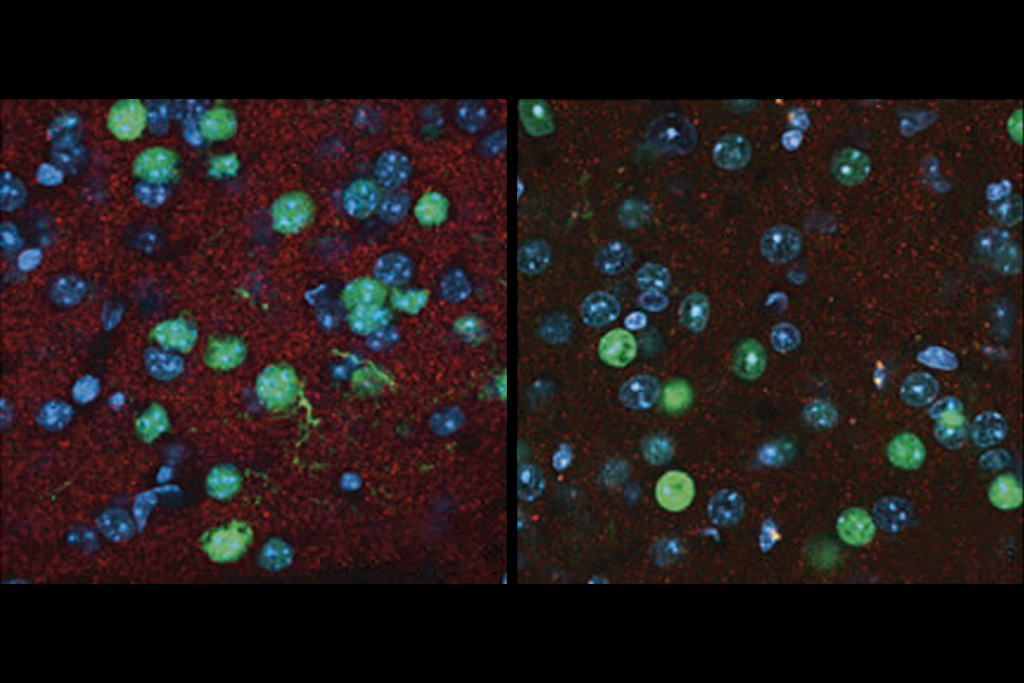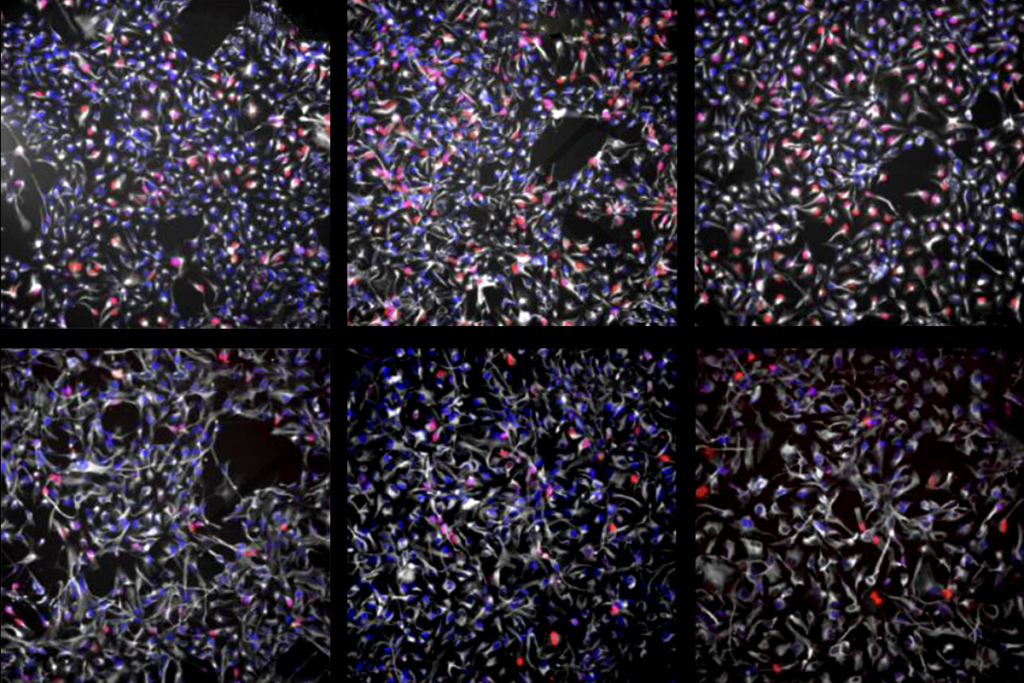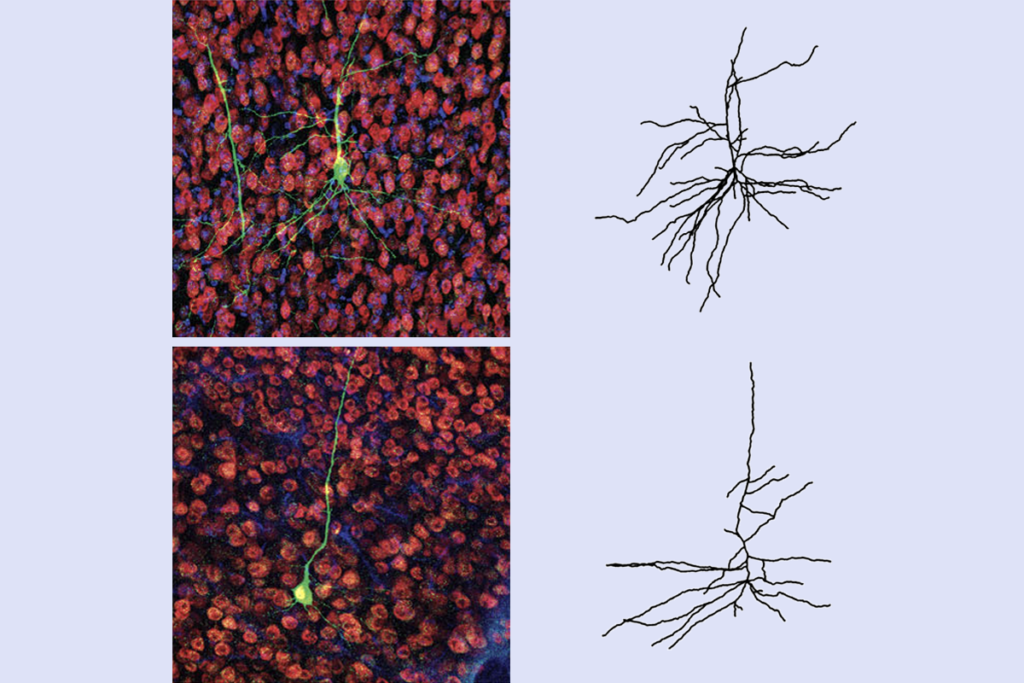Local connections
To better understand how local connectivity is altered in autism, we first need to define what it means, says Tal Kenet.
Our brains have roughly 100 billion neurons, with approximately 100 to 1,000 connections emanating from each one. Those connections are what make it possible for neurons to communicate and transfer information between nearby and distant brain areas.
Scientists refer to connections as being ‘functional’ when this connectivity increases or decreases with a particular behavior. These changes can be measured using brain-imaging techniques — with some limitations.
In our recent study, published 14 January in the Proceedings of the National Academy of Sciences, we found that local connectivity within a one-centimeter region is reduced, not increased, in autism. This finding counters the prevailing hypothesis that local functional connectivity is stronger in people with autism than in controls.
For about a decade, this hypothesis proposed that people with autism have too many local functional connections and too few long-range functional connections. The hypothesis emerged from studies of postmortem brain tissue1, 2, 3 and genetic studies4, 5. The studies provided evidence that local inhibitory activity, which dampens signaling between nearby neurons, is reduced in the brains of people with autism.
The idea was that if there is less inhibition between nearby neurons, there will be an excess of signaling, leading nearby neurons to be overconnected or to overcommunicate. But there was no functional evidence — that is, actual measurements of functional connectivity inside a small brain region — to support this idea.
To better understand how local connectivity is altered in autism, however, we first need to define what it means.
When considering the hypothesis of locally excessive functional connectivity, three things are often overlooked.
First, no consensus has ever emerged about what ‘local’ means in this hypothesis. Does local mean in the range of millimeters or centimeters, or can it even extend over greater distances? The scale determines how and where to focus studies of connectivity, so agreement on what local actually means is important in order to test this hypothesis.
Second, genetic evidence in particular suggests that abnormal neural inhibition in autism begins at the very onset of brain development, probably in the womb. Brain development is highly dynamic, and without proper local inhibition, neuronal connections would be unlikely to develop normally.
So, if inhibition was already reduced during development, it is possible that excitatory signaling would become weaker to try to compensate for the lack of inhibition. In such a case, reduced inhibition would not necessarily mean excess communication.
Third, most studies of functional connectivity don’t distinguish between different types of functional connectivity. Inhibition itself is essential for functional connections. This means that, in some cases, less inhibition would lead to reduced, not increased, functional connectivity.
In particular, functional connections in the brain are often driven by synchronizing different neurons to fire at the same rate, or rhythm.
For instance, the alpha rhythm, which occurs when neurons are activated at about 10 Hertz, is used to synchronize activity among distant populations of neurons. The gamma rhythm, which occurs when neurons are activated at frequencies greater than 30 Hertz, synchronizes mostly nearby populations of neurons.
Both of these brain rhythms depend on local inhibition. Without proper inhibition, those rhythms, and therefore functional connectivity facilitated by those rhythms, will be compromised.
Though our findings are contrary to the prevailing connectivity hypothesis, they are in line with reduced inhibition in autism. This is because the type of functional connectivity we measured relies on both the alpha and gamma brain rhythms. The fact that functional connectivity is compromised in autism is likely to be the result of a lack of inhibition required for the proper function of those rhythms.
Much remains to be explored about local functional connectivity in autism. Our findings are limited to one type of local functional connectivity, a type dependent on the interactions between the alpha and gamma rhythms, in one part of the cortex (the fusiform face area) during a specific type of task (face viewing).
We need to continue to explore local functional connectivity in autism in other areas, using different paradigms, and perhaps additional forms of local functional connectivity.
That said, it is clear that the general hypothesis of increased local functional connectivity in autism is not true, at least in the scenario we tested, and given the role of inhibition in facilitating functional connectivity, this is probably also the case in many other scenarios.
Tal Kenet is an instructor at Harvard Medical School and Massachusetts General Hospital.
Read more articles from the special report on connectivity »
References:
1. Casanova M.F. et al. Neurology 58, 428-432 (2002) PubMed
2. Fatemi S.H. et al. J. Autism Dev. Disord. 39, 223-230 (2009) PubMed
3. Oblak A. et al. Autism Res. 2, 205-219 (2009) PubMed
4. Buxbaum J.D. et al. Mol. Psychiatry 7, 311-316 (2002) PubMed
5. Martin E.R. et al. Am. J. Med. Genet. 96, 43-48 (2000) PubMed
Recommended reading

Genetic profiles separate early, late autism diagnoses

SHANK3 deficiency and behavior in mice; and more

Autism scientists push back on CDC’s inaccurate vaccine claims
Explore more from The Transmitter

Dosage of X or Y chromosome relates to distinct outcomes; and more

